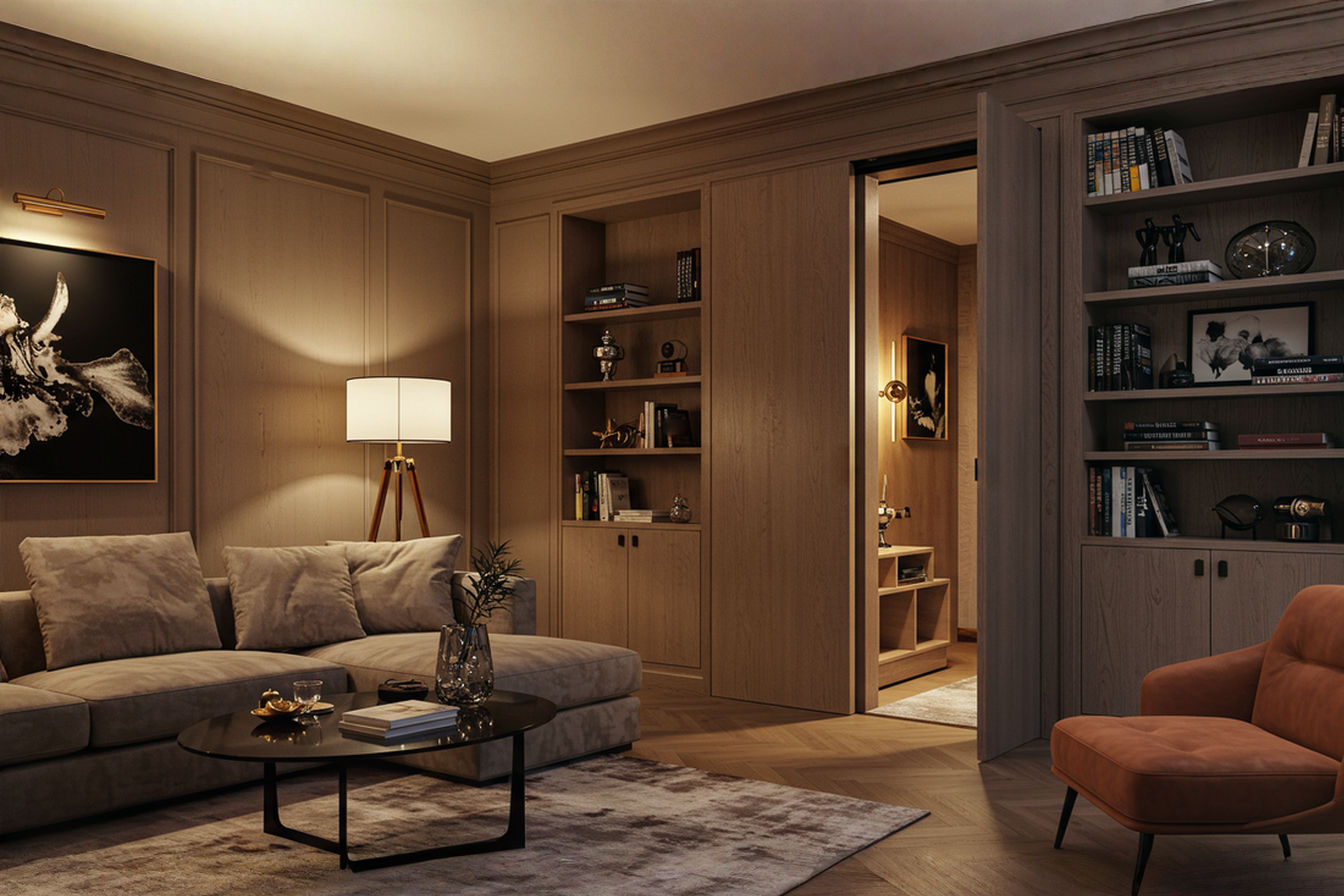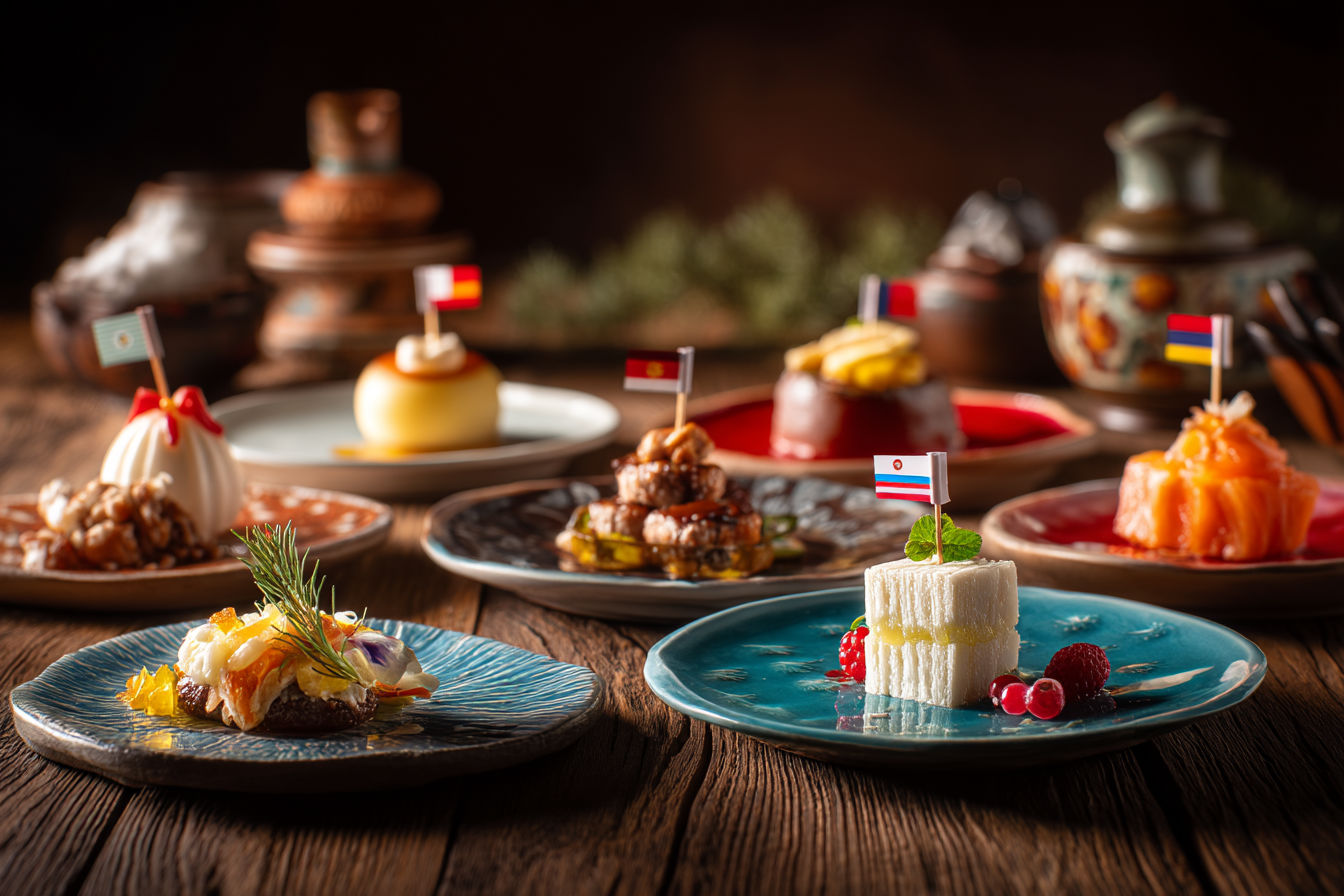This post may contain affiliate links. If you make a purchase through these links, we may earn a commission at no additional cost to you.
In our increasingly digital world, physical mementos hold special significance. Shadow boxes offer a tangible way to celebrate life’s meaningful moments, transforming ordinary keepsakes into extraordinary displays that tell your unique story. These three-dimensional frames create the perfect canvas for preserving cherished items while simultaneously serving as stunning décor in your home.
This comprehensive guide explores twenty creative DIY shadow box ideas that elevate memory preservation to an art form. Whether commemorating a wedding, documenting a child’s growth, or honoring a loved one’s legacy, these projects provide inspiration for creating personalized memory displays that will be treasured for generations.
Understanding Shadow Boxes
What Exactly Is a Shadow Box?
A shadow box is essentially a deep picture frame with a protective glass front that creates a three-dimensional display space. Unlike traditional frames designed for flat photos or artwork, shadow boxes offer depth that accommodates objects of various sizes and textures. This distinctive characteristic transforms them into miniature museum exhibits for your personal treasures.
The enclosed design protects delicate items from dust, damage, and deterioration while simultaneously showcasing them in an organized, aesthetically pleasing arrangement. Modern shadow boxes come in various depths, colors, and styles to complement any décor scheme or collection.
History and Evolution
Shadow boxes have a fascinating historical lineage dating back centuries. Sailors in the 18th and 19th centuries created intricate shadow boxes to display maritime memorabilia and demonstrate their craftsmanship during long voyages. Military personnel adopted the tradition, using shadow boxes to honor service through displays of medals, insignia, and other military achievements upon retirement.
The concept evolved through Victorian memory boxes and curio cabinets, eventually becoming the versatile memory preservation tool we recognize today. Contemporary shadow boxes maintain the traditional purpose of preservation while incorporating modern design sensibilities and creative applications.
Modern Applications
Today’s shadow boxes serve diverse purposes beyond traditional keepsake displays. Interior designers incorporate them as statement pieces in home décor. Crafters use them for three-dimensional artwork. Museums employ similar techniques for artifact preservation and exhibition. The versatility of shadow boxes makes them perfect for numerous creative applications while maintaining their core function of memory preservation.
Basic Materials and Tools
Creating a shadow box project requires surprisingly few materials. The essentials include:
- A shadow box frame (purchased or handmade)
- Backing material (foam board, cork board, or fabric-covered cardboard)
- Adhesives (archival glue, mounting tape, or pins)
- Basic tools (scissors, ruler, pencil, craft knife)
- Memorabilia or display items
- Optional embellishments (decorative paper, fabric, small ornaments)
Professional-quality shadow boxes can be purchased from craft stores, but budget-friendly options include repurposing deep picture frames or creating custom boxes from wood or cardboard. The beauty of DIY shadow boxes lies in their adaptability to your specific vision and resources.
Planning Your Shadow Box Project
Selecting the Right Box Size and Depth
Choosing appropriate dimensions forms the foundation of your shadow box project. Consider both the items you’ll display and where you’ll place the finished piece. Standard shadow boxes range from 1-3 inches deep, but custom options can extend to 5 inches or more for bulkier items.
Measure your largest object and ensure your chosen box provides at least half an inch of clearance between the item and the glass. For wall-mounted displays, lighter and shallower boxes typically work best, while deeper, sturdier boxes suit tabletop presentation.
Choosing a Theme or Concept
A cohesive theme creates visual harmony in your shadow box display. Your theme might revolve around a specific event (wedding, graduation), a person (baby, family member), an activity (travel, sports), or a concept (seasons, growth). The theme determines which items to include and guides your design decisions regarding colors, textures, and arrangement.
Focusing on a single theme prevents visual chaos and transforms random mementos into a meaningful narrative. Even with eclectic collections, identifying a unifying element—whether color scheme, time period, or emotional significance—enhances the visual impact of your display.
Gathering and Preparing Memorabilia
Once you’ve established your theme, gather potential items for inclusion. Typical shadow box contents include photographs, tickets, small trinkets, fabric swatches, dried flowers, letters, cards, and small personal effects. Evaluate each item for preservation needs, considering factors like light sensitivity, fragility, and material composition.
Prepare items by cleaning gently with appropriate methods. Consider creating photocopies or high-quality replicas of especially valuable or deteriorating documents. For three-dimensional stability, some items may benefit from minimal preservation treatment, like pressing flowers or reinforcing delicate paper.
Design Considerations and Layout Planning
Before permanent assembly, experiment with different arrangements. Professional designers recommend creating a layout plan on paper, photographing potential arrangements, or testing configurations directly on the backing board before committing to adhesives.
Consider visual principles like balance, focal points, and negative space. Creating layers and varying heights adds visual interest and dimension. Remember that simpler arrangements often create more powerful displays than cluttered compositions. The goal is to guide the viewer’s eye naturally through your memory narrative.
20 Creative DIY Shadow Box Ideas
1. Wedding Memory Shadow Box
Transform wedding keepsakes into an elegant display commemorating your special day. Incorporate your invitation, fabric from your dress, boutonniere, cake topper, or handwritten vows. Wedding colors provide a natural color scheme, while adding a printed background featuring your venue creates context. Position your wedding photo as the central focal point with smaller items arranged artfully around it.
For extra sentiment, include hidden elements like a handwritten note about your feelings on the wedding day tucked behind visible items. This creates a discovery experience when you choose to reveal these personal touches to special viewers.
2. Baby’s First Year Timeline
Document a child’s remarkable first year of growth with a chronological shadow box. Create a timeline effect using ribbon or string with miniature clothespins holding monthly photos. Include significant mementos like hospital bracelets, a lock of hair, or tiny shoes. Measurement cards or growth charts provide context to the visual story of development.
Consider dividing the shadow box into sections for different milestones: first smile, sitting up, crawling, walking. Adding small labels with dates personalizes the display while creating a comprehensive record of this fleeting time.
3. Travel Adventures Collection
Showcase your wanderlust through a travel-themed shadow box featuring mementos from favorite destinations. Currency, ticket stubs, maps, and small souvenirs create a visual travelogue. For cohesive design, mount items against a vintage map background or arrange them geographically to represent your journey path.
Travel shadow boxes can focus on a single memorable trip or represent multiple adventures. Creating depth by placing larger items toward the front and smaller items toward the back enhances the dimensional effect and mimics the layered nature of travel experiences.
4. Military Service Tribute
Honor military service with a respectful display of medals, insignia, and service memorabilia. Traditional military shadow boxes follow specific protocols for arrangement, typically showcasing rank insignia, unit patches, service medals, and a folded flag. Photos in uniform and significant documents like honorable discharge papers add personal context.
This style of shadow box often incorporates patriotic elements through color scheme and arrangement. Consider adding a small plaque with service details or an engraved nameplate to formalize the tribute. Many veterans’ organizations provide guidelines for appropriate military shadow box creation.
5. Sports Achievements Display
Celebrate athletic accomplishments by showcasing medals, ribbons, team photos, and small equipment pieces. Tournament tickets, championship rings, or jersey swatches add authentic touches to the display. Consider incorporating action photos as the background to provide context for the memorabilia.
For youth sports progression, arrange items chronologically to demonstrate growth and improvement. For specific achievement celebration, organize items by importance, featuring championship medals or record-breaking moments prominently. Team colors naturally inform the color scheme for a cohesive presentation.
6. Concert and Festival Memories
Preserve the energy of live music experiences in a shadow box featuring ticket stubs, wristbands, setlists, or guitar picks. Concert posters (reduced in size) create dramatic backgrounds, while small LED string lights can echo stage lighting effects. For music enthusiasts with extensive concert histories, consider creating themed boxes by genre, decade, or artist.
Adding dimensional elements like miniature instruments or band merchandise transforms flat memorabilia into dynamic displays. Some enthusiasts incorporate actual vinyl records or CD covers as backing elements to reinforce the musical theme.
7. Family Heritage Shadow Box
Connect generations through a family history shadow box featuring ancestral photos, heirloom jewelry, immigration documents, or traditional cultural items. Old letters, fabric from traditional clothing, or recipes passed through generations add intimate touches to family narratives.
Arrange items chronologically to show family progression or group them by family branches. Adding a simplified family tree as the background provides context, while small name tags or dates help identify individuals and relationships for future generations viewing the display.
8. Seasonal Nature Collection
Celebrate natural beauty through seasonal collections of botanical specimens, feathers, or interesting stones. Pressing and preserving flowers, leaves, or other plant materials creates lasting natural art. Label specimens with collection dates and locations for scientific interest.
For cohesive design, organize by season, color palette, or specimen type. Nature shadow boxes benefit from neutral backgrounds that don’t compete with the organic beauty of the items. Consider adding small magnifying elements for viewing tiny details in natural specimens.
9. Pet Memorial Shadow Box
Honor a beloved pet’s memory with a thoughtful display containing a collar, favorite toy, paw print impression, or fur clipping. Photos capturing your pet’s personality become central focal points, while tags or personalized items add emotional significance.
Creating a pet memorial offers therapeutic value during grief while celebrating the joy your companion brought to your life. Background colors reflecting your pet’s bed or favorite blanket create a sense of comfort, while adding a handwritten note about favorite memories provides personal context.
10. Graduation Celebration Display
Commemorate educational achievements by displaying tassels, honor cords, acceptance letters, or program booklets. Create visual interest by incorporating school colors and emblems throughout the design. The mortarboard cap positioned in the corner creates an instantly recognizable graduation theme.
For academic significance, include special awards, scholarship notifications, or particularly meaningful assignments. Adding a background featuring the school building or campus creates context, while positioning the diploma (or a copy) as the central focal point emphasizes the achievement.
11. Crafting and Hobby Showcase
Display your passion for crafting through a shadow box featuring small tools, material samples, or miniature finished projects. For needlecraft enthusiasts, incorporate various threads, fabric swatches, and pattern pieces. Woodworkers might include wood types, miniature tools, or project sketches.
Arrange items to demonstrate process—from raw materials to finished product—creating a visual representation of your creative journey. This shadow box style celebrates both the tangible outputs of your hobby and the specialized knowledge you’ve developed.
12. Birthday Milestone Memory Frame
Celebrate significant birthdays with displays featuring age-specific memorabilia. For milestone adult birthdays, include congratulatory cards, party favors, or symbolic gifts. For children’s birthdays, incorporate age-appropriate toys, drawings, or handprints showing growth.
Creating birthday shadow boxes annually establishes a meaningful tradition, eventually yielding a collection that visually documents development across time. Setting aside specific items during birthday celebrations specifically for future shadow box inclusion ensures meaningful mementos are preserved.
13. Holiday Tradition Shadow Box
Capture holiday spirit year-round through displays of ornaments, decorations, or tradition-specific items. Christmas shadow boxes might include special ornaments, stockings miniatures, or Santa letters. Other holidays offer equally rich material—Valentine’s cards, Easter egg decorations, or Halloween costume elements.
Holiday shadow boxes serve dual purposes as seasonal decorations and memory preservation. Creating individual boxes for different celebrations eventually builds a collection that documents your family’s unique holiday expressions and traditions over time.
14. Childhood Memory Preservation
Preserve childhood innocence through shadow boxes featuring small toys, artwork, school projects, or outgrown shoes. First lost tooth, special birthday cards, or award certificates create tangible connections to fleeting childhood moments. Age progression photos provide visual context for physical items.
For parents, these displays offer emotional touchpoints to rapidly passing developmental stages. For children viewing them later, they provide valuable insight into their own early experiences and personality formation. Consider creating separate boxes for significant childhood phases or combining items in a single developmental timeline.
15. Literary-Inspired Shadow Box
Celebrate your favorite books through creative displays featuring meaningful quotes, character representations, or thematic elements. Include miniature books, bookmarks, ticket stubs from film adaptations, or pressed flowers reminiscent of described settings. Author signatures or special edition book elements add collector’s value.
Literary shadow boxes allow bibliophiles to externalize their relationship with important texts. Creating genre-specific displays (science fiction, romance, mystery) or author-focused collections allows for thematic organization of an ongoing collection reflecting reading journeys.
16. Career Achievement Display
Document professional milestones through business cards, name badges, award certificates, or project mementos. Include photos from significant work events or teams, along with symbols representing important achievements. For long careers, consider arranging items chronologically to show progression.
These displays serve both as personal motivation and retirement celebration pieces. The visual representation of career accomplishments provides tangible evidence of professional impact and growth that digital resumes or portfolios cannot capture with the same emotional resonance.
17. Relationship Journey Timeline
Chronicle a significant relationship by creating a visual timeline of your journey together. Include movie tickets from first dates, travel souvenirs from shared adventures, or small mementos from meaningful conversations. Photos showing your evolution as a couple provide the narrative structure.
Relationship shadow boxes make meaningful anniversary gifts, demonstrating thoughtful curation of shared experiences. Consider dividing the shadow box into yearly sections for longer relationships or focusing on specific relationship phases for more detailed storytelling.
18. Beach Vacation Memory Box
Capture seaside magic through displays of collected shells, sand samples, or beach glass. Create depth by positioning larger shells in the foreground and smaller specimens in the background. Adding location labels or vacation photos provides context for your collections.
Beach shadow boxes benefit from color schemes reflecting coastal palettes—blues, tans, and whites create cohesive designs. Consider adding small vials of sand from different beaches or creating a map background identifying collection locations for educational value.
19. Artistic Expression Shadow Box
Transform your shadow box into dimensional artwork by incorporating original paintings, drawings, or mixed media elements. Create miniature gallery-style displays featuring your creative evolution or artistic influences. Adding small tools of your craft emphasizes the creative process.
These displays blur the line between memory preservation and artistic creation. Consider incorporating lighting elements to highlight specific components or creating interactive elements that viewers can manipulate to discover hidden aspects of your artistic expression.
20. Digital-Physical Hybrid Memory Box
Bridge technological and physical worlds through innovative displays incorporating QR codes linking to digital content alongside physical mementos. Print small QR code cards that, when scanned, reveal videos, additional photos, or audio files adding context to physical items.
This modern approach allows for comprehensive memory preservation without overcrowding physical space. Visitors to your home can interact with your memories on multiple sensory levels, creating a richer experience than either purely digital or purely physical displays alone could provide.
Materials and Techniques
Best Types of Shadow Boxes
When selecting your shadow box frame, consider both aesthetic and functional factors. Ready-made shadow boxes from craft stores offer convenience and consistent quality, typically available in standard sizes ranging from 8×10 inches to 16×20 inches with depths between 1-3 inches. Custom frame shops provide personalized options with specific dimensions, though at premium prices.
Budget-conscious crafters can repurpose existing items: deep picture frames, wooden cigar boxes, or display cases. For fully customized options, construct shadow boxes from wood trim and backing board, which allows complete control over dimensions and style. Consider frame material durability for long-term display—solid wood frames offer stability for heavier items, while lighter frames work well for paper memorabilia.
Essential Supplies and Tools
Beyond the shadow box itself, several key supplies enhance project success:
- Archival-quality backing board prevents yellowing and deterioration
- Acid-free adhesives (glue dots, double-sided tape, or mounting squares) preserve delicate items
- Miniature hooks, pins, or clear fishing line for suspending lightweight objects
- Precision cutting tools for custom backing material or mat board
- Acid-free paper or fabric for background materials
- Small props or supports for three-dimensional stability
- Measuring tools for precise placement
Professional-grade supplies justify their cost for irreplaceable memorabilia, while more economical options suffice for casual displays. Always test adhesives on inconspicuous areas before applying to valuable items.
Mounting and Preservation Techniques
Different materials require specific preservation approaches. For paper items like photos or documents, use acid-free mounting corners rather than direct adhesive application to prevent damage. Fabric items benefit from gentle stitching to acid-free backing board. Heavier objects may require stronger mounting methods like silicone adhesive or custom brackets.
Consider preservation needs based on item composition—metal objects should be cleaned and sealed to prevent tarnishing, while organic materials may need stabilization treatment. Position light-sensitive items away from direct sunlight to prevent fading. For maximum protection, consider UV-protective glass upgrades for your shadow box frame.
Adding Personal Touches and Embellishments
Enhance your display with thoughtful embellishments that complement without overwhelming your memorabilia. Background materials create context—decorative papers, fabric, maps, or sheet music establish thematic foundations. Small decorative elements like miniature frames around photos, decorative corners, or small ornaments add visual interest.
Typography elements—printed quotes, handwritten notes, or custom labels—provide narrative context. Consider incorporating lighting elements for dramatic effect, from battery-operated string lights to small LED spots highlighting specific items. These finishing touches transform simple collections into cohesive artistic displays.
Assembly and Preservation Tips
Step-by-Step Assembly Process
Successful shadow box creation follows a logical sequence:
- Prepare your shadow box by cleaning the glass and interior surfaces
- Cut backing material to fit precisely within the frame
- Determine final layout through temporary arrangement
- Create any necessary background elements or divisions
- Mount largest or background items first
- Add middle-layer elements, building dimension
- Position foreground or focal items last
- Secure the backing board according to frame specifications
- Test the display vertically before final closure
Working systematically from background to foreground prevents damaging delicate items during assembly. Allow adhesives to dry completely between layers when working with heavier objects to ensure stability.
Proper Item Arrangement and Balance
Visual composition significantly impacts the emotional impact of your shadow box. Create focal points through item positioning, size relationships, and negative space. The viewer’s eye naturally follows directional elements like ribbons, arrows, or chronological arrangements, so use these to guide visual exploration of your display.
Balance doesn’t require perfect symmetry—asymmetrical arrangements often create more dynamic visual interest. Consider both physical weight distribution (for stability) and visual weight (the attention items naturally draw). Creating depth through layering enhances the three-dimensional quality that distinguishes shadow boxes from traditional frames.
Securing Items Effectively
Different attachment methods suit various materials and preservation needs. For temporarily securing items during arrangement, reusable adhesive putty allows repositioning without damage. For permanent mounting, archival-quality options include:
- Acid-free mounting corners for photos and documents
- Conservation-grade double-sided tape for paper items
- Micro dots of archival glue for small objects
- Monofilament thread or clear fishing line for suspended items
- Custom-fitted foam core supports for larger three-dimensional objects
- Entomology pins for fabric items (inserted through backing board)
Test adhesives on similar materials before applying to valuable items. For irreplaceable memorabilia, consider consulting preservation professionals for specialized mounting techniques.
Preservation Considerations for Different Materials
Various materials face different preservation challenges. Paper items risk yellowing and brittleness—position away from direct light and use acid-free surroundings. Textiles may fade or deteriorate—clean gently before inclusion and avoid folding that creates stress points. Metal objects might tarnish—apply appropriate sealants before display.
Organic materials like flowers or leaves require proper drying and preservation before inclusion. Some items, like old photographs or delicate fabrics, benefit from conservation-quality reproductions rather than originals if deterioration concerns exist. Research specific preservation techniques for unusual materials to ensure longevity.
Display and Maintenance
Ideal Placement in Your Home
Shadow box placement affects both preservation and visual impact. Position displays away from direct sunlight, which fades colors and damages sensitive materials. Avoid areas with temperature fluctuations or high humidity, such as bathrooms or near exterior doors, which can damage paper and cause adhesive failure.
Consider viewing height when hanging wall-mounted shadow boxes—position the center approximately at eye level for average adults (57-60 inches from the floor). Tabletop displays benefit from stable surfaces away from high-traffic areas. Group related shadow boxes together for gallery-style impact or distribute throughout your home as conversation pieces.
Lighting Considerations
Proper lighting enhances shadow box displays without causing preservation issues. Natural indirect light provides ideal viewing conditions without harmful UV exposure. For dedicated illumination, LED lights generate minimal heat and UV radiation while highlighting dimensional details.
Position lights to minimize glare on glass surfaces—angled lighting from above rather than direct frontal lighting reduces reflection issues. Consider frame-mounted or recessed lighting for permanent displays or battery-operated options for temporary highlighting. Display-specific lighting transforms shadow boxes from daytime decor to evening focal points.
Cleaning and Maintenance Tips
Regular maintenance preserves both the container and contents of your shadow box. Clean the exterior glass with ammonia-free glass cleaner applied to a soft cloth rather than sprayed directly onto the surface to prevent seepage around edges. Dust wooden frames with a microfiber cloth, avoiding liquid cleaners that might damage finishes.
Address interior dust accumulation by occasionally removing the backing and using compressed air to gently clean unreachable areas. Check for signs of insect activity, moisture damage, or adhesive failure during these maintenance sessions. Photograph your arrangement before disassembly to ensure proper repositioning of any displaced items.
Updating and Refreshing Shadow Boxes
Shadow boxes need not remain static—periodic updates maintain their relevance and visual appeal. Consider seasonal rotations of holiday-themed displays or annual additions to ongoing collections like sports achievements or travel adventures. Replace faded photographs with fresh prints or add newly discovered memorabilia to family history displays.
When refreshing arrangements, document the original configuration through photographs before disassembly. Take the opportunity to evaluate item condition and replace deteriorating mounting materials with fresh archival-quality supplies. These periodic refreshes extend the lifespan of your shadow box while maintaining its emotional significance.
Conclusion
Shadow boxes transform ordinary mementos into extraordinary visual narratives that preserve what matters most. More than simple decoration, these displays create tangible connections to significant experiences, relationships, and achievements. Each carefully curated shadow box becomes both a personal time capsule and a visual story to share with others.
The beauty of DIY shadow boxes lies in their endless adaptability to your unique memories and creative vision. Whether documenting life’s major milestones or celebrating everyday moments, these three-dimensional displays elevate memory keeping to an art form. By applying thoughtful design principles and preservation techniques, you create not just decor, but family heirlooms that will connect generations through shared experiences.
In our increasingly digital world, the tactile nature of shadow box displays offers refreshing authenticity. Unlike photos stored on smartphones or social media posts, these physical memory repositories engage multiple senses and resist technological obsolescence. They stand as tangible reminders of lives well-lived and moments worth remembering—truly the most meaningful art your home can display.






